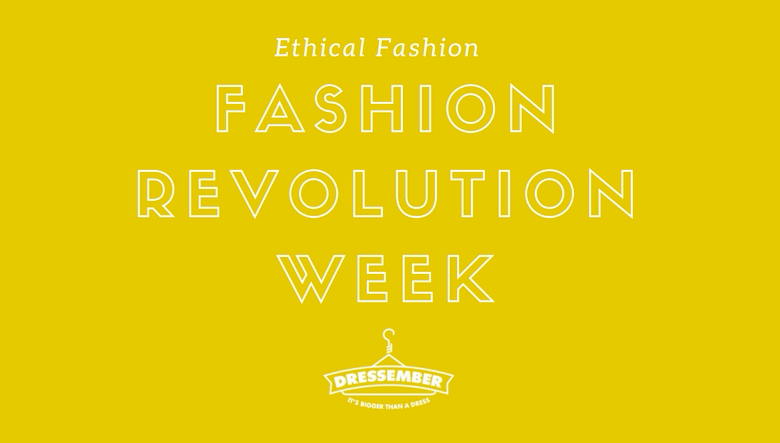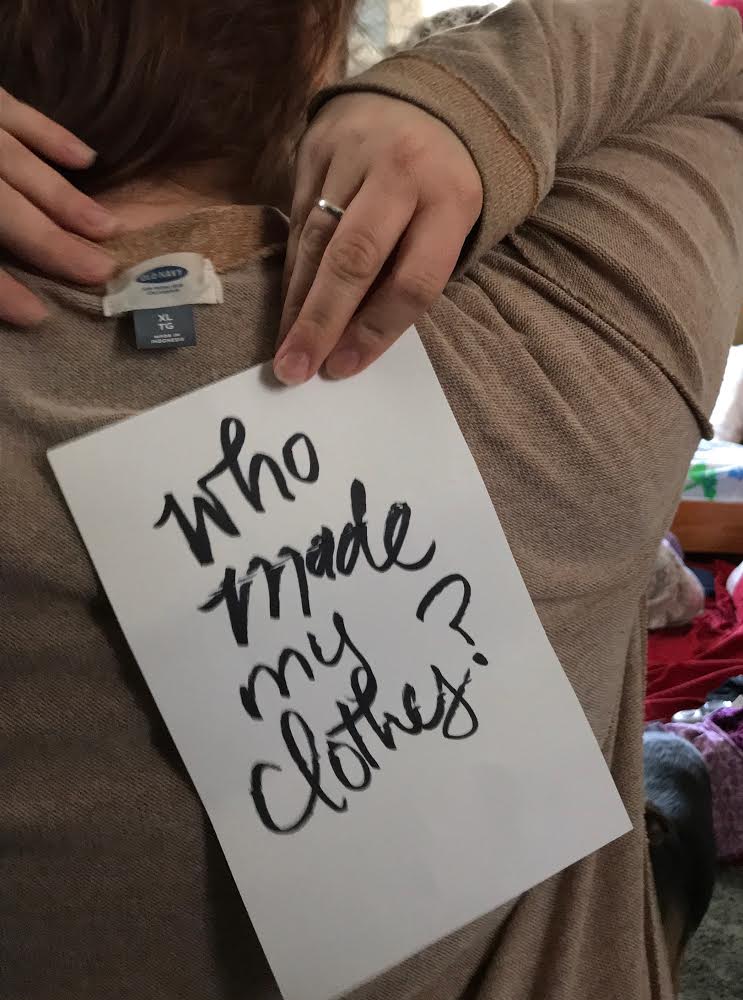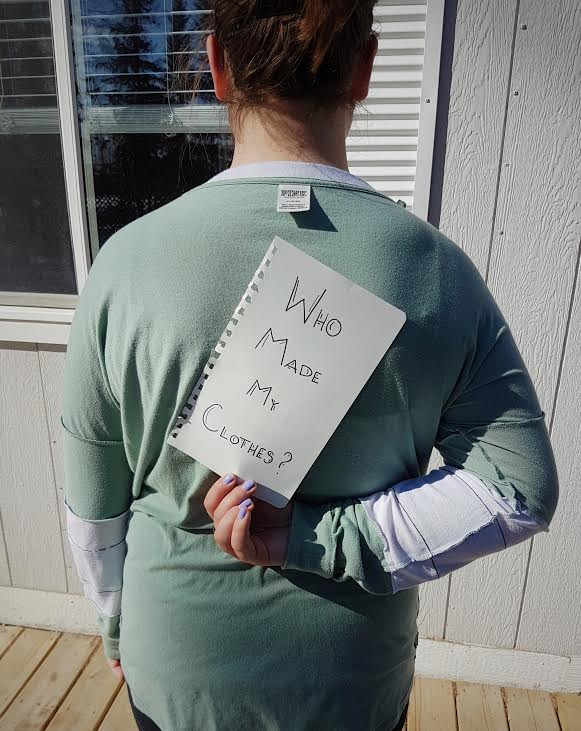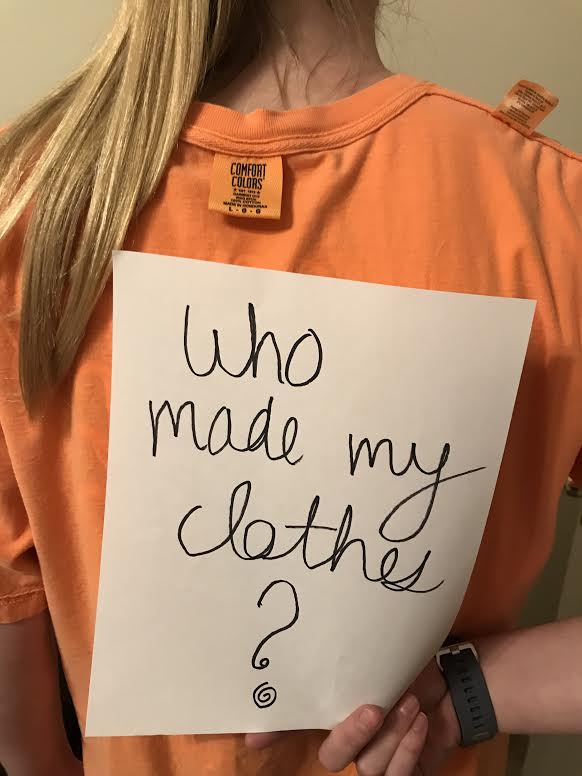Fashion Revolution Week
In a desperate attempt to make myself believe that it is spring (despite the snow that is currently falling over Chicago), I have entered into a bit of a spring-cleaning frenzy and have spent the past few days slowly sorting through my closet, finding articles of clothing that I never wear to get rid of. This process of digging through small mountains of t-shirts and sweaters has repeatedly led me to wonder:
Where do my clothes come from?
Who made them?
And under what conditions were they made?
These questions are being asked with more frequency since the 2013 Rana Plaza factory collapse in Bangladesh, which resulted in the death of more than 1,100 people, injuring thousands and earning the title of the most fatal garment factory disaster in history.
The Rana Plaza Collapse, pictured above, created worldwide outrage in 2013.
One organization, in particular, Fashion Revolution, has been pushing for transparency in the garment industry following this disaster. For the past five years, the company has hosted Fashion Revolution Week in April to commemorate the tragedy at Rana Plaza and “to campaign for a fairer, safer, cleaner fashion industry”.
This year’s Fashion Revolution Week holds the theme “MONEY, FASHION, POWER” and “will explore the flows of money and the structures of power across fashion’s supply chains” with an emphasis on the wages earned by garment workers, the prices of our own clothing, and what exactly we are paying for.
Fashion Revolution Week will also mark the launching of this year’s “Open Studios” project, which requests that international designers “open their studios to the public and share their inspiration” in showcasing events throughout the week. This will not only allow consumers a glimpse into the processes going into the production of their clothes but also serve as a visible reminder that our clothes are created by real people.
Fashion Revolution Week begins today (Monday, April 23) with Fashion Question Time, hosted at the Houses of Parliament by chairwoman Mary Creagh, and will end with a press call. Join the conversation and stay informed by following #FQT on social media.
The 2018 Fashion Transparency Index is also published today to kick off Fashion Revolution Week. This index “[assesses] 100 global brands and retailers... and [ranks] them according to how much information they share about their supply chains.” This index has already proved to be a powerful collection of information and an incredible tool in the fight for transparency.
Advocacy Opportunity
April 24, 2018, marks the fifth anniversary of the Rana Plaza factory collapse. On this day, Fashion Revolution asks everyone to pose the question “Who made my clothes?” and push for increased transparency in the fashion industry. Using #WhoMadeMyClothes, post a photo of your clothing labels to social media and tag the brand in your post to encourage them to release information about where their products come from or email a brand directly to request for more transparent and ethical practices.
Here are some posts from our community at Dressember:
Chynna, Rae, Katherina, Sarah (pictured above) & Mary Beth (pictured below) show us how to do it.
use this sample social media post:
Dear [enter brand name here], did you know that there are more slaves than ever before in human history? Did you know that according to the International Labor Organization there are 24.9 million people in forced labor globally? I encourage you to aim for the highest level of transparency in your supply chain to make sure the person who made this [enter clothing item here] is paid fair wages and works in acceptable conditions. Sincerely, a customer who cares.
#fashionrevolution #itsbiggerthanadress
Throughout the rest of this week, Fashion Revolution will be hosting a number of events throughout the world. To discover ways that you can get involved in your area, visit Fashion Revolution’s events page.
The existence of unethical practices permeating the global garment industry for decades is no longer hidden from the public, but the fast fashion industry continues to hide the details of their production lines in the shadows. The Rana Plaza factory disaster allowed the world to catch a glimpse into the life of exploited garment workers, and now is the time for all of us to band together to fight such practices and to demand for more information about who made our clothes.
You don't have to wait until December to be a part of the impact. Join the Dressember Collective and become part of a powerful community of advocates and donors furthering the work and impact of the Dressember Foundation through monthly giving.
XO
About the Author
Morgan Wiersma is a student at Chicago City Colleges, where she plans to finish her Associate in Arts this spring before beginning to pursue an undergrad in Creative Nonfiction and Social Sciences. She calls her cozy apartment in downtown Chicago home and lives with her dwarf rabbit, Lola. A coffee enthusiast and avid writer, Morgan also enjoys small art projects, tea candles, and oversized flannel shirts.












